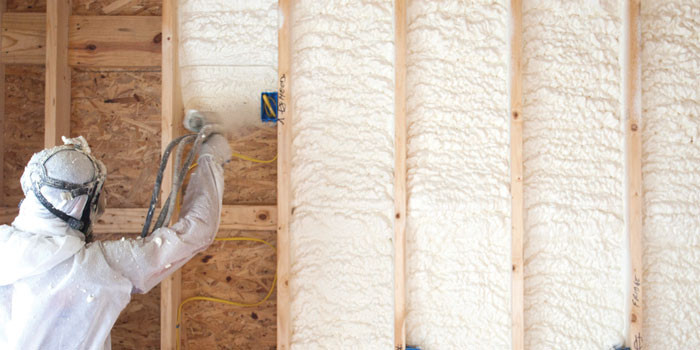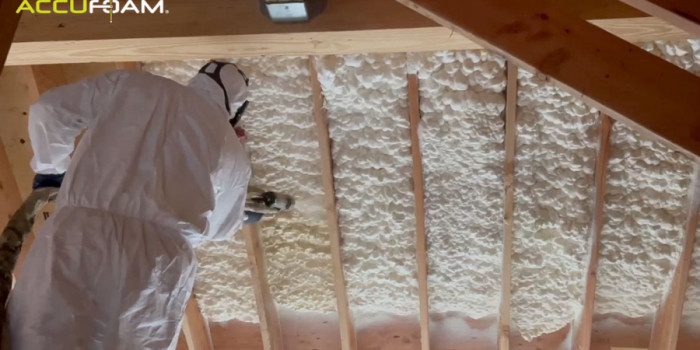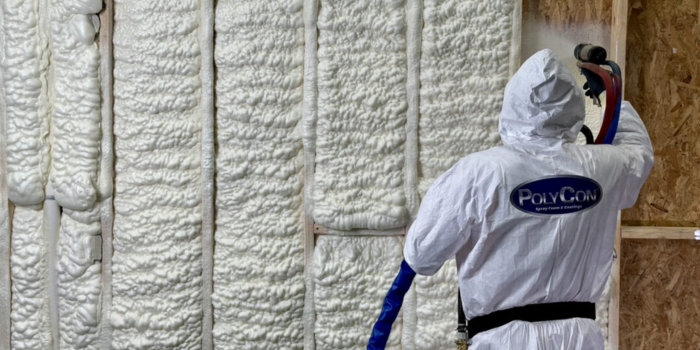Small Changes Can Make a Big Difference - Part 2 of 2


LATE SUMMER 2020 – Spray Foam Magazine – Note: We wrote this two-part article in February 2020, just after the Sprayfoam Convention & Expo and published the first part before COVID-19 ravaged our economy. We interrupted the series with an article about air filtration in the last issue, which we hope was beneficial as we were all sorting out the best ways to protect our families and ourselves. Now that we’ve learned so much more about this virus and how it spreads it’s apparent that if everyone used PPE common to our SPF industry we would all be fully protected!
The business practices shared within this article are imperative for those who want to make money in spray foam, but there’s another basic concept not covered in the article that’s critical when times get tough. We know the economy ebbs and flows. We’ve seen numerous peaks and valleys over the decades, and we know how hard it is to grow our own businesses during the good times. Even more important to our long-term success is how fast we can shrink when the economy takes a tumble. Hopefully you had a contingency plan going into this pandemic, and hopefully it’s working. Those who handle this downturn well will be prepared to bounce back and flourish as the economy improves.
In Part-1 of this series we talked about the first three of five ways a spray foam contractor can make small changes in operations to dramatically improve net profit.
- Raise prices
- Reduce fixed costs
- Increase performance
- Reduce waste
- Reduce overhead
Raising prices by only a percent or two is not at all difficult, especially in a robust economy like we had before COVID. Reducing fixed costs using a bank line of credit to earn early pay discounts is another easy thing to do and the benefit is greater than the cost savings alone. As the economy cycles, we could easily end up in a time of short chemical supply as we have several times in the past. When supplies are tight and chemical is being allocated, those with a strong history of paying their bills ahead of schedule are sure to get the supply they need.
The last two areas where small changes can have a substantial effect on the bottom line are Reducing Waste and Reducing Overhead.
Reduced Waste
There are two major sources of waste in our industry, the most insidious being call-backs, but first we’ll look at a couple of ways contractors often waste chemical.
The obvious waste is the foam sprayed on the wall and shaved off. Low-density, open-cell foam has a rapid and high-volume expansion so it’s common to have foam expand beyond the studs that needs to be shaved. The question is why was it installed to a thickness where shaving is required? If an expectation is set with the customer that the foam will not fully fill the cavity, you can reduce shaving dramatically, provided your applicator knows to limit the foam depth as well. If the customer wants the cavity full-filled and trimmed, that’s OK, but they should pay for the additional material needed. As an example, if a two-by-six wall must be shaved, it’s common to need an additional inch of foam on average, so the crew must shave 15 percent of the foam off and dispose of it. If it’s two-by-fours, the same additional inch is 22 percent waste!
Hopefully you will never sell a job using medium density, closed-cell foam full-filled in a cavity. Those who have done this know how hard it is to trim the foam and remove over-spray from the framing, but if the owner, contractor or architect insists on this, you need to add enough to the job to make it worth doing. We’ve seen jobs where the contractor charged tens of thousands of dollars for single-set jobs that were full-filled and ground flat, and even then the net profit on the job was nothing to brag about.
If your contract is to underfill the cavity but still meet code R-Value or job specifications, leave a photo with the customer of what that will look like. Put a copy of the photo in the job information package, and send a copy to the jobsite with the crew so they also know what is expected. When this is not done, it’s all too common for your payment to be held until your crew comes back to full-fill and shave the foam. The solution is to set the expectation and communicate using clear photos so both the customer and your spray crew know what the job is supposed to look like when complete.
Another source of waste is the chemical left in the bottom of drums that sometimes doesn’t get used because it gets contaminated or is otherwise unusable. Of course, it’s hard on the drum pump to starve it of chemical so many contractors stop pumping before the drum is empty. They try to “pour-up” the drums, but too often numerous drums accumulate at the contractor’s shop before this gets done and by the time they get poured-up, the material is degraded if not ruined. Using pressure tanks instead of drums eliminates this problem and we’ll show the benefits of this in a future article. As long as you’re using drums, vigilance to a structured pour-up program will help to reduce this waste. If a contractor sprayed 20 sets per month per rig and left just one gallon in the bottom of each drum, he would waste 480 gallons, or just under five-sets per rig, per year! How much revenue can you generate with five sets of foam?
As mentioned above the most insidious form of waste is call-backs. This is called re-work in other industries and it’s the biggest threat to profitability in all of construction. You should know how much revenue per day your crew averages, and you can break that down to revenue per hour and even revenue per minute! By the way, you can also break average gross margin and net profit down to the crew-day, hour and minute. Every minute, every hour, spent on rework means you’re not earning new revenue and therefore not generating margin or profit. Not only does the rework cost you labor, materials, rig maintenance, fuel and supplies, it also has a missed-opportunity cost since you were not able to earn revenue while you fixed the work you’d done previously. Re-work or call-backs must be eliminated! Period! Poor foam quality due to improper chemistry from “alien foam” sprayed as drums were changed from one density or brand to another is an avoidable problem. SES helps their contractors by providing a kit to purge the hoses using compressed air and save all of the chemical. It’s yet another way SES supports their customers to help them make more money.
The most valuable person on the crew might arguably be the helper who cleans-up after the sprayer. With minimal training, the helper can find problems before the crew leaves the jobsite. Taking a few minutes to make corrections while the rig is still up and running can save hundreds of dollars in cost and thousands of dollars in missed opportunity for new revenue. A one-hour call-back could easily cost more than the net profit on the job.
Reduced Overhead
Reducing overhead by a percent or two is usually not that hard. We tend to get comfortable with rising overhead as it creeps up over the years. A simple question can help to determine the need for any new or repeating expense that comes across your desk; “If I eliminated this cost would I really lose business?” If the answer is no, then don’t spend the money.
Be sure to ask your staff their ideas for reducing overhead. They’ll know and it’s a fun way to give them a little incentive. You might give them the amount they save the company for a couple of months after the expense is eliminated, or pay into a company activity fund to save for something fun your team can do together.
Make this your Mantra and post it everywhere:
No One Makes Money In The Spray Foam Business Unless Someone Is Pulling The Trigger!
Everything your company does should be focused on pulling the trigger. Sales, pre-job communication, jobsite prep, rig maintenance, crew training, and every other activity by every person in the company should be dedicated to spraying foam. To a spray foam contractor, it’s the only thing that really matters.
SES is proud to have some of the best run spray foam companies in the country as customers, and each of these highly efficient and profitable contractors have several policies and procedures in common. Ask the SES Sales and Tech Team in your territory for help and advice. They get to see how the best in the business run their companies and SES believes in sharing. Our president, Charles Valentine, is passionate about helping the industry to “raise the ocean so all boats will float.” When every contractor in every market is operating efficiently and profitably, the whole industry is healthier and those who use our spray foam in their homes and buildings save energy, reduce greenhouse gas emissions and are more comfortable.
Contact SES Polyurethane Systems: Direct any questions about making more money and having fun doing it to SES: Phone: 713-239-0252 // Website: www.sesfoam.com
*Spray Foam Magazine does not take editorial positions on particular issues; individual contributions to the magazine express the opinions of discrete authors unless explicitly labeled or otherwise stated. The inclusion of a particular piece in the magazine does not mean that individual staff members or editors concur with the editorial positions represented therein.
Disqus website name not provided.










































